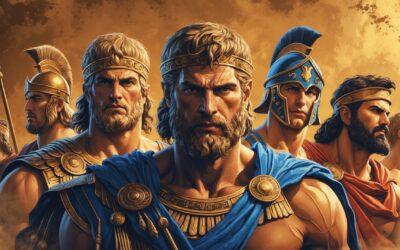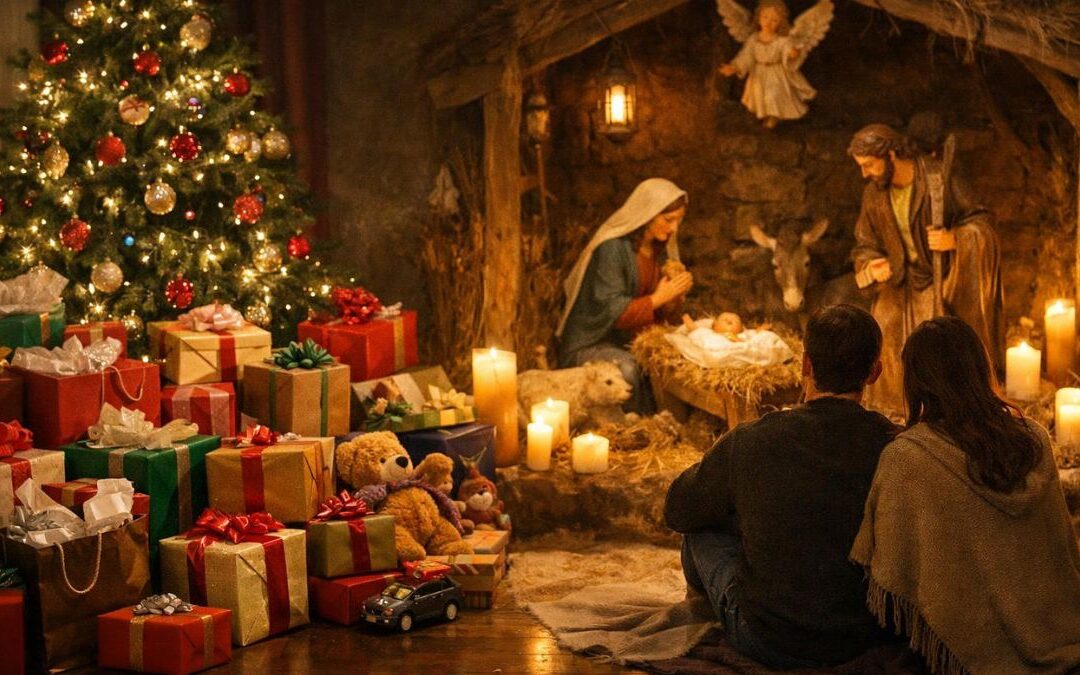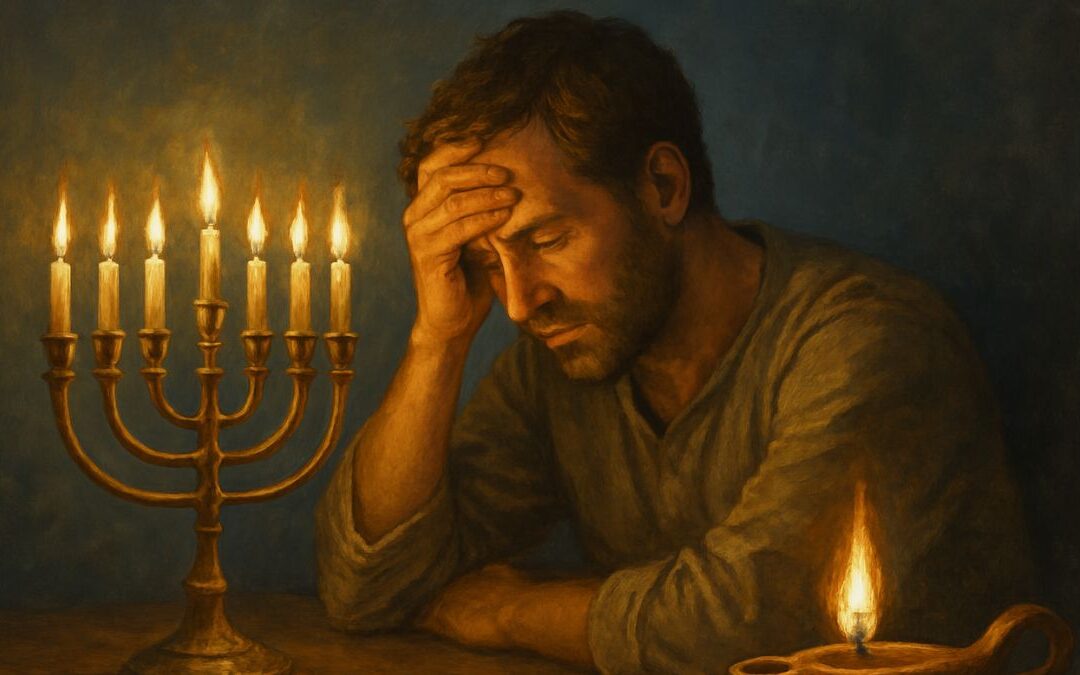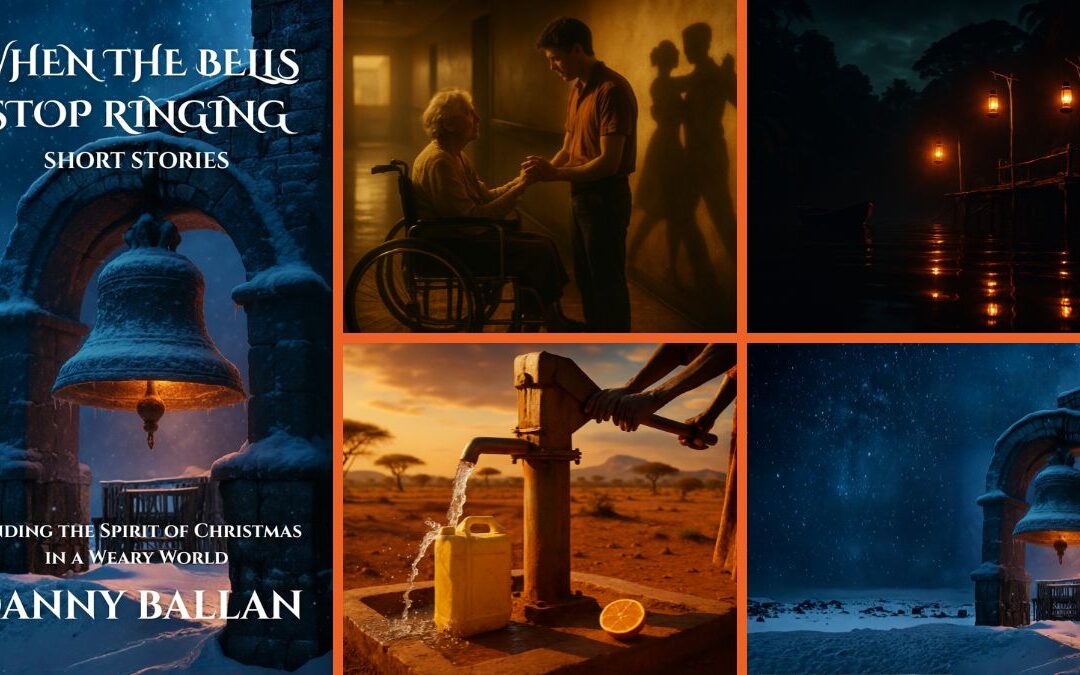- Historical and Cultural Context
- Structure and Literary Innovation
- The Imagery of Hell: Inferno
- Climbing the Mountain of Purgatory
- The Sublime Heights of Paradise
- Themes and Symbolism
- The Influence on Western Literature and Beyond
- Modern Interpretations and Continued Relevance
- Conclusion
- Reading Comprehension Checkpoint
- Let’s Talk | Listening
- Listening Comprehension Checkpoint
- Let’s Learn Vocabulary in Context
- Vocabulary Chekpoint
- Let’s Discuss & Write
- Let’s Play & Learn
Few literary works have achieved the immortal status and enduring fascination of Dante Alighieri’s The Divine Comedy. Written in the early 14th century, this epic poem has captivated generations with its vivid depictions of Hell, Purgatory, and Paradise, offering a complex interplay of theology, philosophy, and human emotion. In this article, we explore the historical context, literary innovations, and cultural significance of The Divine Comedy, inviting readers to journey with Dante through realms that have both terrified and inspired.
Historical and Cultural Context
Dante composed The Divine Comedy during a period of intense political and religious turmoil in Italy. Exiled from his native Florence, Dante’s personal anguish and longing for justice permeate his verses. Set against the backdrop of medieval Europe, the poem not only reflects the intellectual fervor of its time but also serves as a commentary on the corruption and moral decay witnessed by Dante in his society. The work is imbued with the spirit of its era, while also transcending it to speak to universal questions of sin, redemption, and the human condition.
Structure and Literary Innovation
Divided into three cantiche—Inferno, Purgatorio, and Paradiso—The Divine Comedy charts a journey from the depths of hell to the sublime heights of heaven. Each section is meticulously structured in terza rima, a rhyme scheme that Dante invented to lend musicality and momentum to his narrative. This innovative poetic form not only provides a rhythmic cadence but also mirrors the intricate connections between the different realms Dante traverses. The allegorical layers of the work invite readers to interpret the text on multiple levels, be it a moral journey, a personal odyssey, or a philosophical inquiry into the nature of divine justice.
The Imagery of Hell: Inferno
At the heart of The Divine Comedy lies Inferno, the most renowned section of the poem. Dante’s vision of Hell is a meticulously ordered realm where sinners are punished in ways that reflect the nature of their crimes—a concept known as contrapasso. From the frozen lake of Cocytus, where traitors are immobilized in ice, to the fiery depths reserved for the violent, the imagery is both haunting and precise. Dante’s use of vivid detail transforms abstract sins into tangible horrors, inviting readers to confront the consequences of moral transgression. This descent into the infernal not only terrifies but also purifies, as Dante’s guide, the Roman poet Virgil, helps him navigate these dark corridors with both caution and awe.
Climbing the Mountain of Purgatory
Beyond the torments of Hell lies Purgatorio, a realm of hope and gradual purification. In stark contrast to the despair of Inferno, the mountain of Purgatory symbolizes the arduous process of repentance and renewal. Here, souls work to expiate their sins, ascending through a series of terraces that represent different virtues and vices. The allegory of Purgatory serves as a powerful metaphor for personal growth and the possibility of redemption. Dante’s detailed depictions of the penitential journey encourage readers to consider the transformative power of suffering and the importance of moral introspection.
The Sublime Heights of Paradise
The final cantica, Paradiso, transports Dante—and his readers—to the celestial realms of divine light and eternal bliss. Unlike the physical torments of the previous sections, Paradiso is an exploration of the ineffable nature of divine love and cosmic order. Dante’s ascent through the heavenly spheres is marked by encounters with historical and mythological figures, each representing a facet of divine wisdom. The language in Paradiso grows increasingly abstract and transcendent, mirroring the gradual unveiling of the ultimate mystery of God’s presence. This culminating vision of divine harmony not only offers solace but also challenges readers to expand their understanding of the sublime.
Themes and Symbolism
At its core, The Divine Comedy grapples with timeless themes: the struggle between good and evil, the quest for personal redemption, and the human longing for transcendence. Dante employs a wealth of symbolism to convey these ideas. The journey itself is a metaphor for life’s challenges, where every step taken towards the divine requires the renunciation of worldly attachments. The poem’s intricate network of allegories and symbols invites endless interpretation, ensuring that each reading reveals new insights and layers of meaning. For many, The Divine Comedy is not merely a literary masterpiece but a guide to understanding the moral and spiritual dimensions of existence.
The Influence on Western Literature and Beyond
The impact of The Divine Comedy on Western literature is immeasurable. Its themes, structure, and language have influenced countless writers, from John Milton to T.S. Eliot, and its echoes can be found in the works of modern novelists and poets alike. Dante’s blending of classical philosophy with medieval theology set a precedent for intellectual synthesis, paving the way for the Renaissance and beyond. Moreover, the poem’s vivid imagery and moral urgency continue to inspire contemporary discussions on justice, spirituality, and the human experience. Its universality ensures that The Divine Comedy remains a relevant and dynamic work centuries after its creation.
Modern Interpretations and Continued Relevance
In today’s world, The Divine Comedy is often seen as a mirror reflecting the complexities of modern life. Its exploration of human frailty, the possibility of redemption, and the search for meaning resonates with readers from diverse backgrounds. Modern adaptations, whether in literature, art, or film, testify to the poem’s enduring power. Scholars and enthusiasts alike continue to debate its interpretations, ensuring that Dante’s vision remains vibrant and contested. The poem challenges us to consider how the eternal struggles of good versus evil, sin versus virtue, are as pertinent in our digital age as they were in medieval Florence.
Conclusion
The Divine Comedy by Dante Alighieri stands as a testament to the power of literature to capture the full spectrum of human experience. Its intricate blend of poetic innovation, rich symbolism, and profound moral inquiry offers a timeless guide to the complexities of life and the eternal quest for meaning. Whether one approaches it as a historical document, a spiritual allegory, or a work of art, the poem’s influence is undeniable. In engaging with Dante’s epic journey, we are invited not only to explore the depths of human suffering and the heights of divine grace but also to reflect on our own paths towards understanding and redemption.
Reading Comprehension Checkpoint
Let’s Talk | Listening
Listening Transcript: Please don’t read the transcript before you listen and take the quiz.
Reflecting on The Divine Comedy, one cannot help but be drawn into the intricacies of Dante’s journey—not merely as a travel through mythical realms but as a profound exploration of the human condition. I’ve often found myself pondering the allegorical layers that Dante weaves into his narrative. What does it mean, really, to journey from darkness into light? How does one reconcile the terror of the infernal with the promise of redemption that lies at the summit of Purgatory and the divine ecstasy of Paradise?
I recall the first time I read The Divine Comedy. I was struck not just by the vivid imagery of hellish torment or the sublime beauty of celestial realms, but by the way Dante uses his journey as a mirror for personal transformation. His descent into Hell felt like an invitation to confront our own inner demons—those darker parts of ourselves we often keep hidden away. And yet, even in the midst of such despair, there is a quiet hope. Dante’s climb through Purgatory resonated with the idea that no matter how deep the sin, the possibility of renewal is always within reach. It made me think: What are the modern “infernos” we must navigate in our own lives? Perhaps they are not literal fires and icy wastes, but the challenges we face—loss, regret, and the burden of mistakes.
Have you ever experienced a moment when a personal failure or setback seemed insurmountable? Dante’s journey reminds us that the path to recovery often begins with an honest confrontation of our shortcomings. There is a certain catharsis in embracing the painful truths of our existence, much like Dante does as he witnesses the fates of those condemned in Hell. And then, as he ascends the mountain of Purgatory, we see that redemption is not instantaneous. It is a gradual process—a series of steps, each one hard-won, that ultimately lead to a higher state of being.
One aspect of Dante’s work that continues to fascinate me is the meticulous way he marries structure with meaning. The terza rima not only serves as a formal constraint but becomes a kind of musical thread that binds the narrative together. It’s a reminder that beauty can arise even from the strictest of rules—a notion that can be applied to our own creative endeavors and personal growth. Are we, perhaps, too often daunted by the constraints we face, rather than seeing them as opportunities for innovation?
Moreover, Dante’s work is a testament to the enduring power of literature. Despite being written over seven centuries ago, The Divine Comedy remains a living document, inviting each generation to reinterpret its meanings and draw from its wisdom. For me, this is a call to continuously engage with classic works—not as relics of the past, but as sources of ongoing inspiration and guidance. It makes me wonder: How do we, in our modern lives, find guidance in texts that seem distant in time yet resonate so deeply with our personal struggles and aspirations?
I often challenge myself to extract practical lessons from such monumental works. Dante’s journey is not just a tale of cosmic realms; it’s a map for navigating the complexities of life. His confrontation with the darker aspects of the human soul and his eventual embrace of divine love offer a blueprint for overcoming adversity. And in our increasingly complex world, where the boundaries between good and evil are often blurred, such guidance can be both grounding and transformative.
Let’s take a moment to consider the role of literature in our own lives. Do we actively seek out works that challenge our perspectives and invite us to examine our own moral and ethical landscapes? I believe that engaging with texts like The Divine Comedy can spark meaningful discussions and even inspire us to pursue our own journeys of self-discovery. It’s not just about appreciating Dante’s poetic brilliance—it’s about allowing his insights to influence the way we think about our lives, our choices, and our potential for growth.
As we explore these ideas, I encourage you to reflect on your own experiences. Have you ever encountered a piece of literature that made you rethink your values or inspired you to take a new direction in life? What elements of that work continue to guide you in moments of uncertainty? There is something deeply personal about the way literature can mirror our inner lives, and Dante’s work is perhaps one of the most powerful examples of this phenomenon.
I also find it intriguing to consider the parallels between Dante’s journey and our modern quests for meaning. In today’s fast-paced world, where information is abundant and distractions are many, finding a clear path toward self-improvement can be challenging. Yet, Dante’s methodical ascent from the depths of despair to the heights of divine enlightenment suggests that even the most arduous journeys are possible if we take them step by step. What small steps can you take today to move closer to your own vision of fulfillment?
In reflecting on these ideas, I am reminded that great literature does more than entertain—it transforms. The Divine Comedy challenges us to confront our imperfections, to embrace the arduous process of self-redemption, and ultimately, to recognize the potential for greatness within each of us. And so, I invite you to embark on your own journey of exploration. Whether you are revisiting Dante’s epic for the first time or rediscovering its profound lessons after many years, there is always something new to learn, a fresh insight to uncover, or a hidden truth to illuminate.
As our conversation comes full circle, think about how you can apply the themes of The Divine Comedy to your everyday life. Perhaps it is by facing your personal “infernos” with courage or by committing to small, deliberate acts of self-improvement that slowly but surely elevate your spirit. Dante’s journey is as much about the human condition as it is about divine order, and in that balance lies its timeless appeal.
Listening Comprehension Checkpoint
Let’s Learn Vocabulary in Context
When we talk about The Divine Comedy and its enduring impact, several key words and phrases emerge that not only capture its essence but also enrich our everyday language. Consider allegory—a term used to describe a narrative that functions on multiple levels, where characters and events symbolize deeper moral or spiritual truths. In Dante’s work, the journey through Hell, Purgatory, and Paradise is an allegory for the soul’s path toward enlightenment. This idea of allegory can be applied to many aspects of life, from literature to personal growth, reminding us that what lies beneath the surface often holds greater meaning.
Another term central to our discussion is contrapasso. This concept, unique to Dante’s depiction of Hell, refers to the poetic justice in which a sinner’s punishment mirrors the nature of their crime. While it might seem specific to medieval justice, the notion of actions having natural consequences is a principle we encounter in our daily lives, whether in relationships or personal endeavors.
Then there is terza rima, a poetic structure that uses interlocking tercets to create a rhythmic flow. Dante’s invention of terza rima not only gave his work a musical quality but also served as a metaphor for the interconnectedness of all things. In everyday language, we might describe something as having a “harmonious” structure when it flows naturally and logically—a reflection of terza rima’s influence.
The word redemption is another powerful term in Dante’s narrative. Beyond its religious connotations, redemption speaks to the universal possibility of renewal and personal transformation. It reminds us that no matter our past, there is always a chance to rebuild and start anew.
Similarly, transcendence is a word that captures the leap from the mundane to the divine—a central theme in Dante’s ascent through Paradise. In our lives, moments of transcendence occur when we overcome limitations or rise above challenges, experiencing a sense of awe and possibility.
Purification is also key in The Divine Comedy, especially in the context of Purgatory. It refers not just to a cleansing of sins but to the process of refining one’s character. This term is useful in everyday conversations about personal development and the pursuit of excellence.
Next, consider cosmic order, a phrase that hints at the grand design governing the universe. Dante’s vision of Paradise is deeply intertwined with the idea that there is an underlying order to all things—a concept that can inspire us to look for balance and purpose in our own lives.
Another term is immortal, which aptly describes works like The Divine Comedy that endure beyond the limits of time. Immortal in this sense is not just about living forever, but about leaving a lasting legacy that continues to influence future generations.
Finally, epic is a term often used to describe grand narratives. While we might use it to refer to historical or fantastical tales, in everyday language it can denote any endeavor of significant scale and ambition, much like Dante’s monumental journey through the afterlife.
Each of these words—allegory, contrapasso, terza rima, redemption, transcendence, purification, cosmic order, immortal, and epic—not only deepens our understanding of Dante’s work but also enriches our everyday language. They serve as reminders that literature, philosophy, and personal experience are intertwined, each offering insights into the nature of human existence. By weaving these terms into our conversations, we invite a deeper exploration of the ideas that shape our lives, encouraging us to look beyond the surface and appreciate the intricate layers of meaning in everything we do.
Vocabulary Chekpoint
Let’s Discuss & Write
- In what ways does Dante’s depiction of the afterlife challenge your understanding of justice and redemption?
- How can the allegorical journey in The Divine Comedy be applied to modern personal growth or ethical dilemmas?
- What elements of Dante’s poetic structure, such as terza rima, do you find most influential in shaping the narrative’s rhythm and meaning?
- How do you relate the concept of cosmic order to the challenges you face in your own life?
- In what ways can literature serve as a guide for confronting personal “infernos” and achieving transcendence?
Writing Prompt:
Reflect on a personal experience where you faced significant challenges and emerged transformed. Write an essay that draws parallels between your journey and Dante’s allegorical path from Hell to Paradise. Consider using descriptive language to illustrate the “terrible” and the “divine” moments of your experience. Tips: Start with a vivid account of a low point, use metaphors that mirror Dante’s contrapasso, and conclude by explaining how the experience led to personal redemption. Sample phrases might include “I descended into…” or “In that moment, a light emerged…” to guide your narrative.










0 Comments